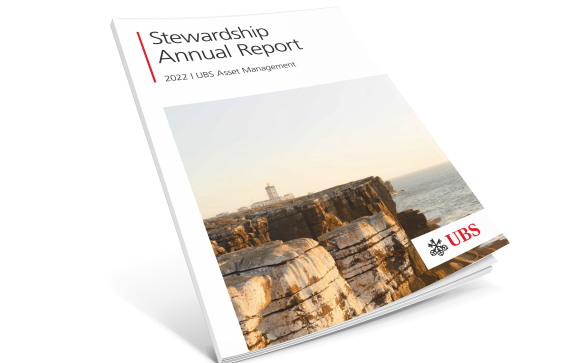The future of stewardship
More activity does not necessarily lead to greater effectiveness in achieving objectives.
While asset owners and asset managers have renewed their stewardship efforts recently, it is questionable whether more resource and activity is resulting in greater effectiveness. Hans-Christoph Hirt points to a way forward.
As any self-respecting productivity book will tell you, more activity does not necessarily lead to greater effectiveness in achieving objectives. Investment stewardship is no different.
Granted, the work of the Financial Reporting Council (FRC) in advancing stewardship and launching a much-revised code in 2020 following the damning assessment of the UK’s code in a wider review in 20181 has moved things along. And the process the FRC has put in place to become a signatory to the code has resulted in renewed efforts and an increased focus on stewardship by asset owners and asset managers over recent years.
Yet, it is questionable whether more resource and reporting is translating into effectiveness. In order to turn all this activity into outcomes that matter to asset owners and ultimate beneficiaries of investments, we need more clarity and alignment of objectives across the investment chain, better measurement of engagement outcomes, enhanced assessment of investor contribution as well as estimation of its impact.
We need more clarity and alignment of objectives across the investment chain.
Stepping back for a moment, stewardship efforts can be targeted at quite different outcomes and dimensions of materiality, specifically regarding real-world outcomes.
Clearly defining objectives is therefore essential to enhancing practice, effectiveness and alignment along the investment chain. There are three principal categories of company engagement outcomes:
- Outcomes addressing investment opportunities and risks relating to a specific company/portfolio during a typical holding period of say two-to-five years which have the potential to enhance alpha. Examples are changes in a company’s portfolio of businesses, capital allocation or the composition of the board or senior management.
- Real-world outcomes relating to systemic risks impacting market returns over time which have the potential to enhance beta (used here as a proxy for market returns). An example would be enhanced or accelerated decarbonization efforts of companies (ideally across a sector) aiming to limit the macroeconomic impacts of global warming, rather than addressing idiosyncratic risk.
- Real-world outcomes relating to global norms adhered to by investors, such as the UN Global Compact, which may or may not contribute to investment returns over time — or at least they may be very difficult to measure or estimate.
Significant overlap exists. For example, addressing climate-related opportunities and risks at the company level will contribute to the management of related systemic risk at the market level.
There can also be tensions between the different outcomes categories, particularly over different time horizons. These can highlight differences in assessing and preferences for addressing sustainability issues between asset owners, who often have long-term objectives, and asset managers, who tend to be measured and rewarded on shorter time horizons.
There can also be tensions between the different outcomes categories, particularly over different time horizons.
Addressing systemic risk
Addressing systemic risk
The outcomes categories are also particularly helpful when considering the role of investors in addressing systemic risks. Lukomnik and Hawley have argued that long-term overall market returns, which can be affected by systemic risks, impact the value of aggregate portfolios more than the performance of specific companies and, by extension, specific portfolios in the short to medium term.2
The Thinking Ahead Institute, for example, estimates that climate tipping points could result in a 50%-60% downside to existing financial assets by 2100, given a business-as-usual scenario. In contrast, they estimate that taking action to transition to a well below 2°C world might lead to a loss of only 15% of existing assets, which could be partly offset by the positive benefits from new primary investment.3
Long-term investors should therefore arguably be much more focused on addressing systemic risks.
When considering how to address systemic risks, asset owners and managers should also consider their ability or efficacy to take effective action on particular issues, individually or in collaboration, both at the policy and company level, and ask whether they are best placed to achieve a desired outcome through stewardship. 4
While direct engagement of investors with companies is and will remain an important part of investment stewardship regarding systemic risk, it has limitations and needs to be part of an overall strategy of addressing such risks which requires changing the playing field.5 Through policy work this could involve support for regulation and incentives changing the economics of mitigating emissions or investing in new technology, or creating demand for climate solutions. It could also include involvement in sector and value chain initiatives to address industry wide challenges.
Incentive challenges and the risk of free-riding peers abound. In order to help manage these, active asset managers typically focus their stewardship activities on enhancing relative performance of specific portfolios (alpha) by prioritizing outcomes that address company specific investment opportunities or risks rather than systemic issues. While the cost/benefit analysis of addressing systemic risks does not change for individual asset managers, there is an argument that it is particularly relevant regarding passive strategies, enhancing beta.
The asset managers that do invest in addressing systemic risks will be those that recognize the value of long-term partnership with their clients and seek to contribute towards addressing their biggest challenge: Securing sustainable, long-term returns across portfolios.
The asset managers that do invest in addressing systemic risks will be those that recognize the value of long-term partnership with their clients.
Measurement of outcomes, assessment of investor contribution and estimation of impact
Unfortunately, even after clarifying stewardship objectives, considerable challenges regarding company engagement remain.
The ability to measure and report engagement progress and outcomes will require a systematic approach to engagement, including capturing of company specific objectives and interactions, supported by adequate systems and processes. This will allow investors to establish a link or correlation between their activities and outcomes in reporting. Progress and outcomes metrics should complement activity metrics and qualitative reporting should be enhanced by case studies describing the work undertaken with companies and resulting outcomes (ideally with an acknowledgement of the company engaged).
More visibility about the contribution of asset managers to outcomes is also required. Engagement management systems can be used to set and track objectives. Asset managers, can then evidence when, how and how often a concern and potential solution to deal with it (which was subsequently adopted) were raised with a company. This way a credible link between activities and outcomes in the sense of correlation (rather than causation) can be established and reported.
Making a contribution as an investor, particularly when working in partnership, will require an evolved approach: engagement will need to be more focused (quality rather than quantity), investment-centric and informed, and genuinely two-way, with information flowing between the investor and engaged company.
This means asset managers will need to bring something to the table when engaging with companies. Such a contribution could be: proprietary research and benchmarking; insights derived from an understanding of industries; supply chains and key drivers therein; knowledge about sector specific capital allocation; and management or connections across the ecosystem or companies.
Finally, investors will need to develop ways to estimate the investment and real-world relevance or impact of engagement and outcomes. If engagement is primarily aimed at addressing investment opportunities and risks relating to a specific company/investment portfolio during a typical holding period (alpha), then ideally, investors would measure or at least estimate its impact on investment performance.
However, there are significant challenges and limitations to stewardship performance attribution, as there are many other variables influencing share price and other metrics. Beyond the critical question of the causal relationship, it can take a significant amount of time to achieve engagement outcomes and any related performance impact.
There are significant challenges and limitations to stewardship performance attribution.
Recognizing these limitations, meaningful qualitative descriptions of outcomes and how they might have enhanced performance in case studies and quantitative estimations of the performance impact of engagement building on existing studies are meaningful steps in enhancing current practice.
If engagement primarily seeks real-world outcomes relating to systemic risks impacting market returns in the long term, then investors could measure and report progress on real-world metrics. For example, carbon emissions or the rate of decarbonization across a portfolio of companies or dedicated engagement program.6
One step back, two steps forward
In a nutshell, if asset owners and managers are to secure the great potential of investment stewardship at the policy and company level they should further align their stewardship objectives. And in order to protect and enhance returns for ultimate beneficiaries over different time horizons and with due regard to real-world outcomes, this must include the consideration of systemic risks.
Before we can move forward, it is therefore necessary to pause and take a step back.

Hans-Christoph Hirt
Head of Impact Engagement
Hans, Head of Impact Engagement at UBS AM's Sustainable Investing and Impact team since Aug. 2022. Former MD and Board member of EOS at Federated Hermes. Led engagements, regional teams, and served as Head of Engagement. Started at Ashurst law firm, qualified solicitor, and taught corporate law at London School of Economics. Non-executive director at Hermes Pension Trustees Limited. Affiliated with UCL Law School, author of articles on governance and sustainability. Certifications: Chartered Director and Fellow, ACCA, SIIDI, and IMC.

PDF
The Sustainable Investing Edition
The Sustainable Investing Edition
The special edition of Panorama is dedicated to sustainable investing and places a marker in the ground for where we should all head next.
Was this article helpful?
Please enable javascript in your browser and retry.
The feedback component cannot be displayed.






